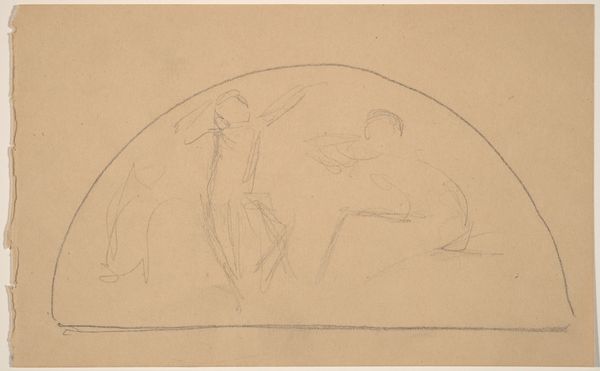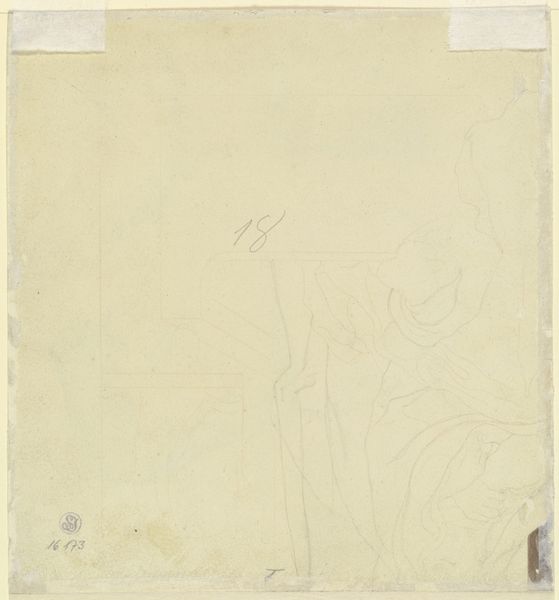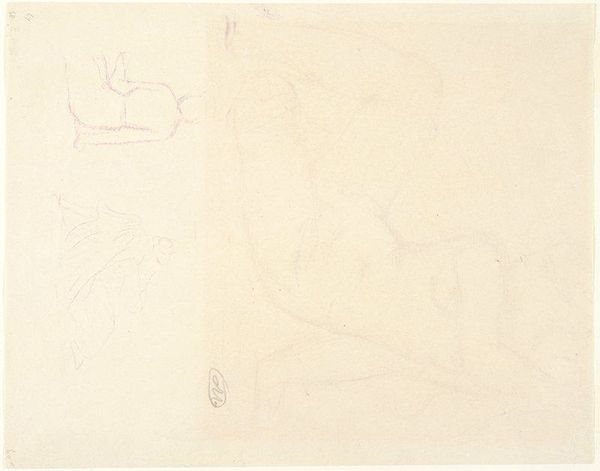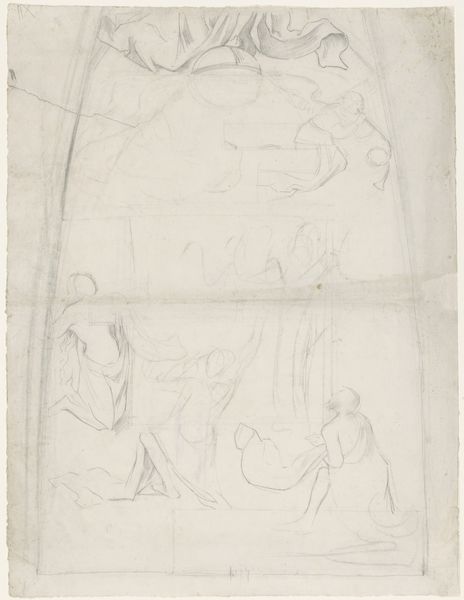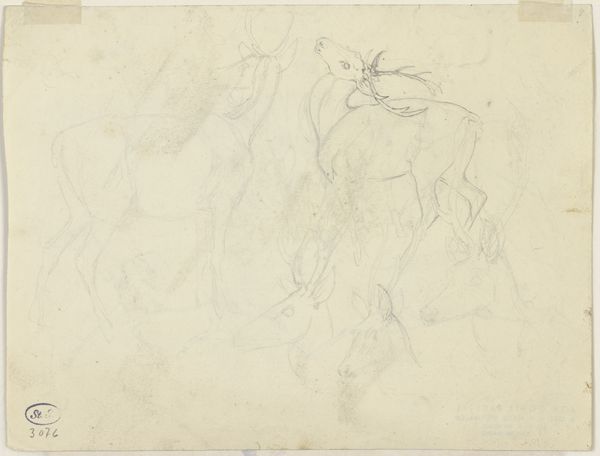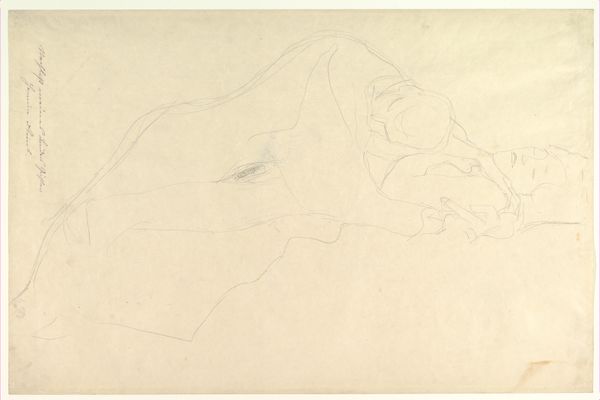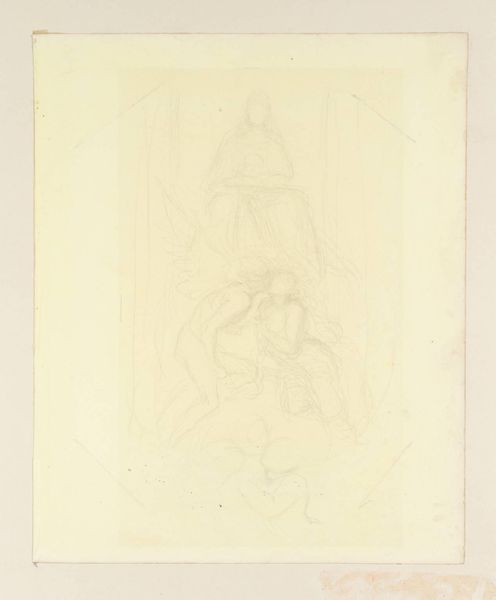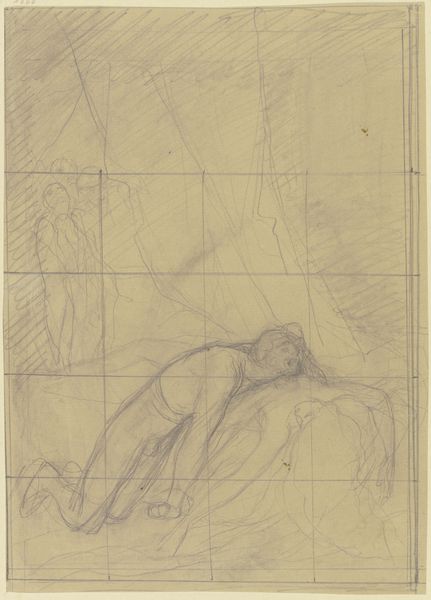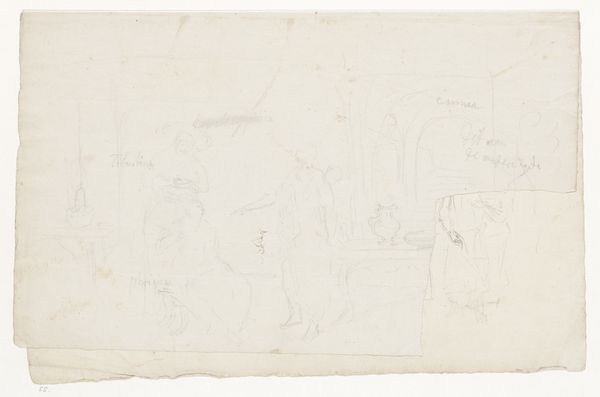![Study for a Border Design [verso] by Charles Sprague Pearce](/_next/image?url=https%3A%2F%2Fd2w8kbdekdi1gv.cloudfront.net%2FeyJidWNrZXQiOiAiYXJ0ZXJhLWltYWdlcy1idWNrZXQiLCAia2V5IjogImFydHdvcmtzLzM1ZGQ4YWNiLTJhMTktNDQxYS1iNTIyLTYxZjM5MWQ1OGM5Zi8zNWRkOGFjYi0yYTE5LTQ0MWEtYjUyMi02MWYzOTFkNThjOWZfZnVsbC5qcGciLCAiZWRpdHMiOiB7InJlc2l6ZSI6IHsid2lkdGgiOiAxOTIwLCAiaGVpZ2h0IjogMTkyMCwgImZpdCI6ICJpbnNpZGUifX19&w=3840&q=75)
drawing, pencil
#
portrait
#
drawing
#
etching
#
figuration
#
pencil
Dimensions: sheet: 32.7 x 31.8 cm (12 7/8 x 12 1/2 in.)
Copyright: National Gallery of Art: CC0 1.0
Editor: So, this is Charles Sprague Pearce's "Study for a Border Design [verso]", dating from between 1890 and 1897. It's a pencil drawing, and the figures sketched have a dreamlike, almost ephemeral quality. What strikes you most about this work? Curator: I'm immediately drawn to the *process* evident in the materiality of this drawing. Look closely; you can almost feel Pearce's hand moving across the page. The visible underdrawing, the corrections... it speaks to the labor involved in the design, challenging any notion of effortless artistic creation. What does the support itself, the paper, suggest about its intended function? Was this meant to be a finished piece? Editor: That's interesting. I hadn't thought about the paper itself as telling part of the story. It looks like it might just be a working sketch rather than a presentation piece. Curator: Exactly. This wasn't conceived of as an autonomous "work of art." It was a preparatory sketch, maybe even functional design intended for reproduction. Consider the potential social context: what type of project or architectural setting might this design have been destined for? Churches? Public buildings? Whose patronage would have commissioned such a design? Editor: Maybe a wealthy family's home? It seems grand. Thinking about where this design was *meant* to end up does change my perception of the sketch itself. It makes me consider the artisans who would've taken Pearce's drawings and actually realized them into stained glass or mosaic decorations. Curator: Precisely. This links "high art" directly to the material processes, labour, and sometimes even industrialisation, involved in creating decorative arts for a growing consumer society at the turn of the century. The very existence of this "verso" also makes you wonder what other studies could tell us of Pearce's wider project! Editor: It's like seeing behind the scenes! I will certainly not look at sketches the same way after today.
Comments
No comments
Be the first to comment and join the conversation on the ultimate creative platform.

